Thermal Analysis, Modeling and Simulation in Engineering Processes
A special issue of Processes (ISSN 2227-9717). This special issue belongs to the section "Manufacturing Processes and Systems".
Deadline for manuscript submissions: 15 May 2024 | Viewed by 2250
Special Issue Editors
Interests: tribology; manufacturing; materials science; surface engineering
Special Issues, Collections and Topics in MDPI journals
Interests: welding; additive manufacturing; cladding; hardfacing; modeling; manufacturing processes
Special Issue Information
Dear Colleagues,
Engineering processes form the backbone of modern industrial and technological advancements, which include a wide range of activities involved in designing, developing, and optimizing systems, products, and infrastructure. In this field, thermal analysis plays a crucial role to provide us with a deep insight into the complex thermal phenomena. Understanding and controlling temperature distribution, heat transfer and thermal-induced effects are vital for optimizing process parameters, improving product quality and ensuring operational efficiency. The integration of thermal analysis techniques with advanced modeling and simulation approaches offers a powerful toolset to investigate and predict thermal behavior in manufacturing processes, such as casting, welding, additive manufacturing, machining and heat treatment. By simulating and analyzing thermal phenomena, researchers can optimize process conditions, reduce energy consumption, mitigate thermal-induced defects and enhance product performance.
This Special Issue invites researchers and practitioners to contribute their original research, reviews and case studies covering a wide range of topics, including innovative thermal analysis methods, advanced modeling techniques, experimental investigations, optimization strategies and real-world applications. We look forward to receiving your contributions and fostering meaningful discussions in this rapidly evolving field.
Dr. Leonardo Rosa Ribeiro Da Silva
Dr. Luiz Eduardo dos Santos Paes
Guest Editors
Manuscript Submission Information
Manuscripts should be submitted online at www.mdpi.com by registering and logging in to this website. Once you are registered, click here to go to the submission form. Manuscripts can be submitted until the deadline. All submissions that pass pre-check are peer-reviewed. Accepted papers will be published continuously in the journal (as soon as accepted) and will be listed together on the special issue website. Research articles, review articles as well as short communications are invited. For planned papers, a title and short abstract (about 100 words) can be sent to the Editorial Office for announcement on this website.
Submitted manuscripts should not have been published previously, nor be under consideration for publication elsewhere (except conference proceedings papers). All manuscripts are thoroughly refereed through a single-blind peer-review process. A guide for authors and other relevant information for submission of manuscripts is available on the Instructions for Authors page. Processes is an international peer-reviewed open access monthly journal published by MDPI.
Please visit the Instructions for Authors page before submitting a manuscript. The Article Processing Charge (APC) for publication in this open access journal is 2400 CHF (Swiss Francs). Submitted papers should be well formatted and use good English. Authors may use MDPI's English editing service prior to publication or during author revisions.
Keywords
- thermal analysis
- experimental methods
- numerical methods
- thermal cycles
- phase transformation
- manufacturing processes
- heat sources






